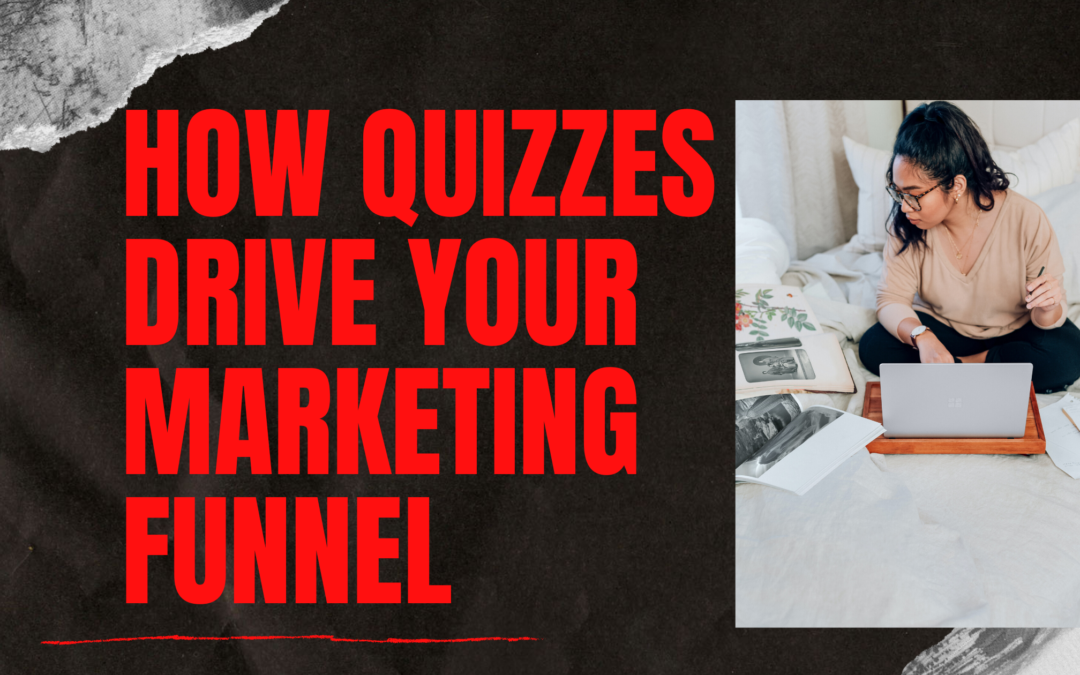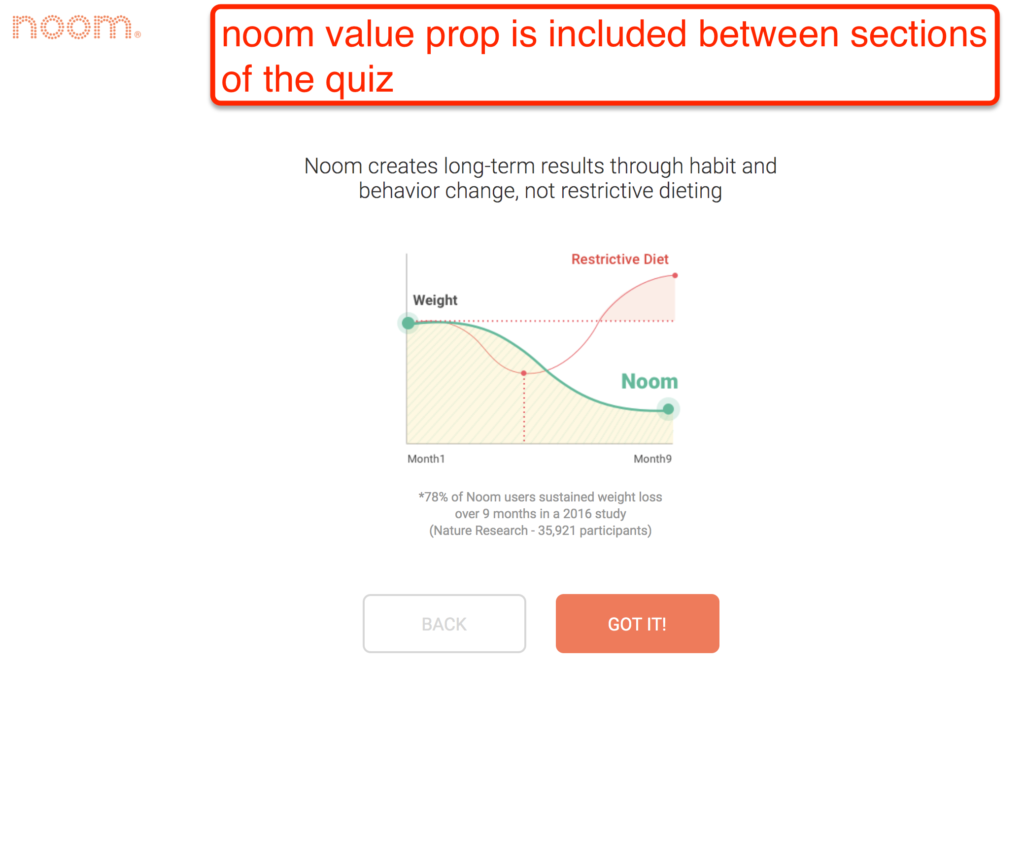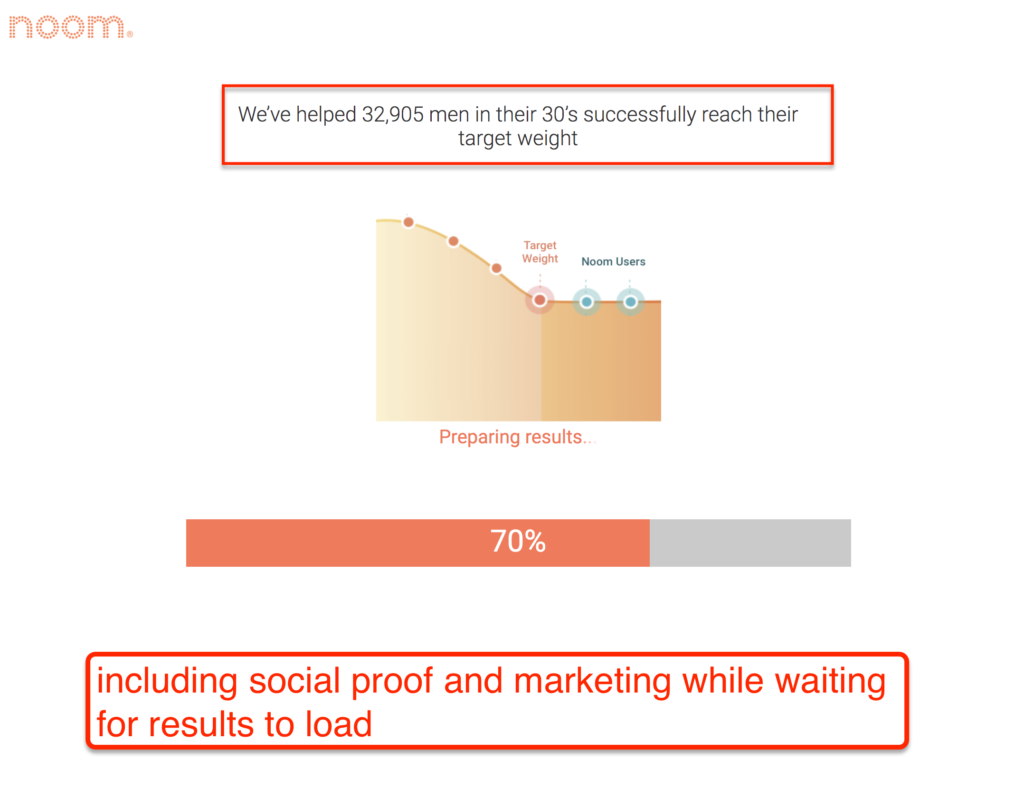Marketing is the act of making change happen
Seth Godin, This Is Marketing
Marketing, at its core, is simple: understand your customers and their needs. Help them meet their goals. Drive them to want the change that you offer.
This movement towards change is exactly why funnels are so important as a framework for marketers. It is not possible to introduce your product to someone and immediately then immediately expect the customer to purchase.
The funnel is an indispensable framework, because it helps marketers send the right message at the right time to the right person. It strategically “makes change happen” and moves shoppers closer to purchase.
The ecommerce marketer’s funnel can be broken up into three parts, at a high level:
- Top of Funnel: Build awareness. Shoppers are starting to learn more about the problem they are dealing with. They are not at the point of purchase–your product or any product for that matter.
- Middle of Funnel: Incite interest. Shoppers have educated themselves on the problem, and are evaluating possible solutions–your product, competitors, and alternatives.
- Bottom of Funnel: Move to purchase. Shoppers are ready to purchase from you, held back by lingering objections or hesitations.
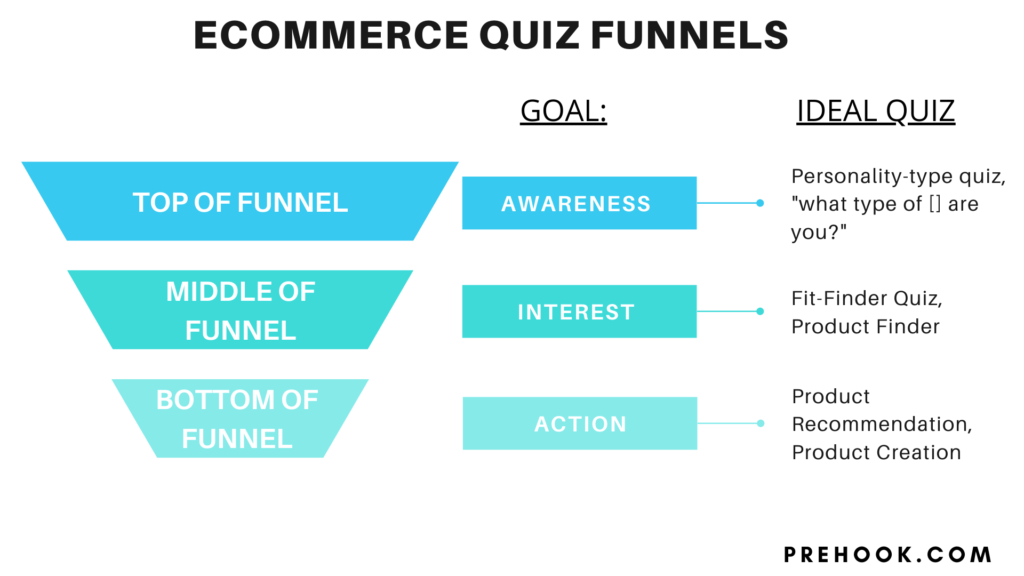
Prospects are in different mindsets at each stage of the funnel: the questions they have, the problems that they are solving, the objections and the urgency to solve their problem.
Understanding these questions, and how you can address them, is critical to building a funnel that moves prospects efficiently from one step to the next, and results in increased conversion rates, higher profitability, and faster growth.
The Importance Of Funnels
The average eCommerce sites convert 1-2% of visitors into customers.
With 98% of visitors leaving without making a purchase, it is so important to capture the attention of shoppers at each stage of the funnel.
A funnel serves as guardrails for your ecommerce site. It helps guide shoppers through the journey of new prospect through to paying customer and loyal repeat customer and advocate.
Regardless of where you stand in terms of conversion rate, focusing on creating a scalable and streamlined system of moving leads through your funnel will be a cornerstone to driving your growth.
Funnels and The Use of Quizzes
Interactive quizzes are effective tools to engage shoppers and learn about them at every stage in the funnel.
At the Top of the Funnel, use quizzes to build awareness (using quizzes as a hook in paid ad campaigns) and to capture email addresses.
In the Middle of the Funnel, quizzes can help further educate shoppers and present them with the product that meets their needs.
And at the Bottom of the Funnel, present enough of a compelling picture of the benefits of the product that they want to purchase right then and there.
In this post, we’ll explore how different brands incorporate quizzes into their marketing strategy, from the top of funnel in building awareness all the way through to sign up and conversion.
Top Of Funnel – Build Awareness
What It Is: The Top Of Funnel is your first contact with shoppers. You are in the earliest stages of your (hopefully) long relationship–the goal is to build awareness, trust, and credibility.
The Goal: The goal is to educate the shopper: deliver information that the shopper finds valuable. The shopper may not be fully aware of the problem that they are solving.
Thus, presenting content and information that educates shoppers on the problem is an effective strategy. You are not making a hard pitch at the top of the funnel. Shoppers are just becoming aware of the problem, and your brand.
How To Use Your Quiz At The Top Of Funnel
A quiz is inherently educational, so it is a perfect tool at the top of the funnel. After answering a few questions, the interactive quiz will provide the user with some valuable knowledge and an engaging experience.
Moreover, people love to take quizzes. And quizzes are an effective hook, to draw users to your site–in fact, 81% of marketers believe that interactive content like quizzes are more effective than static content.
At the Top of the Funnel, quizzes are helpful to:
- hook users with paid ads
- capture more emails
- educate users on the problem
Trade Coffee, a subscription coffee company, uses quizzes to get new users into the top of funnel with Facebook ads. The creative–the image, the product placement, the text–incite curiosity, which is the primary purpose of the ad: to get a user to click on the ad.
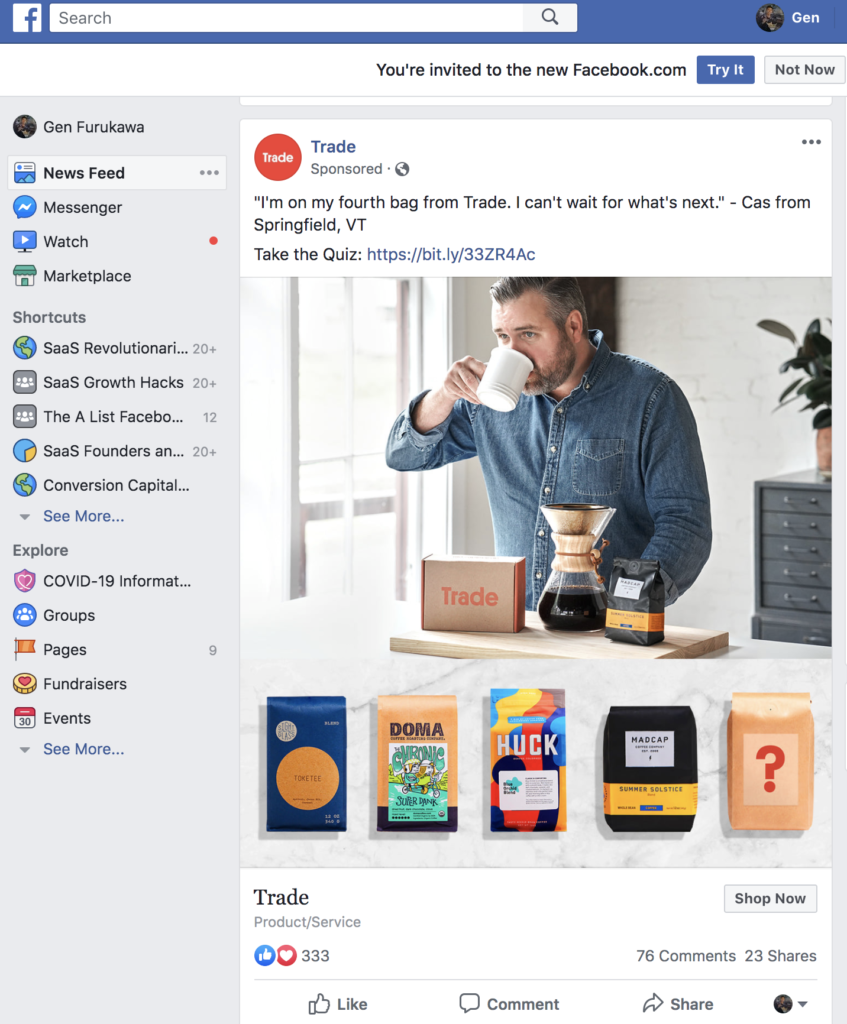
The Facebook ad drives users to the homepage, where the main call to action in both the Hero section and the navigation bar is to “Get Started” (ie take the quiz):

Remember, the effective Top Of Funnel marketing strategies educate users about the problem: Trade incorporates educational snippets in its quiz experience:

These educational notes are effective for two reasons:
- It keeps me engaged. I want to continue taking the quiz to learn more about coffee in a quick and easy way.
- It establishes Trade as an educational authority. Credibility and trust are necessary to establish before a customer feels comfortable making the purchase, and the quiz helps fill this gap.
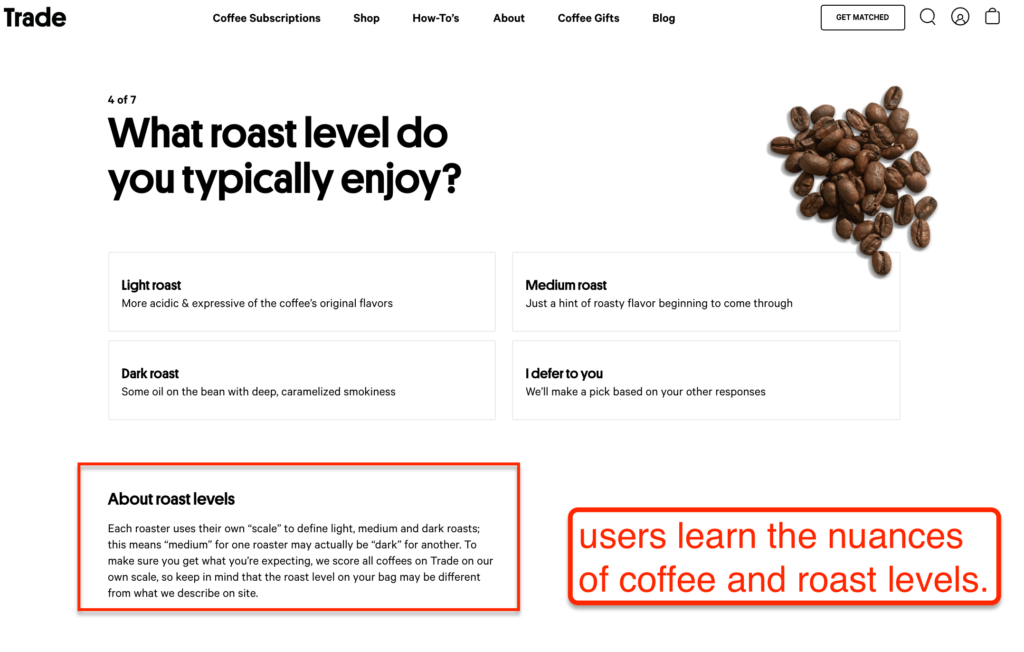
Once the user enters their contact information, they have initiated a relationship. The Top Of Funnel goals has been successfully completed.
How Cosmetics Companies Use Quizzes
Subscription cosmetics brand Ipsy runs a Facebook and Instagram campaign based around their quiz. The hook they use: personalized beauty products sent to you for less than 2 cups of coffee. The 3 minute quiz is their tool to generate the lead and take the first step towards the personalized glam bag. This is the ad that they are running:
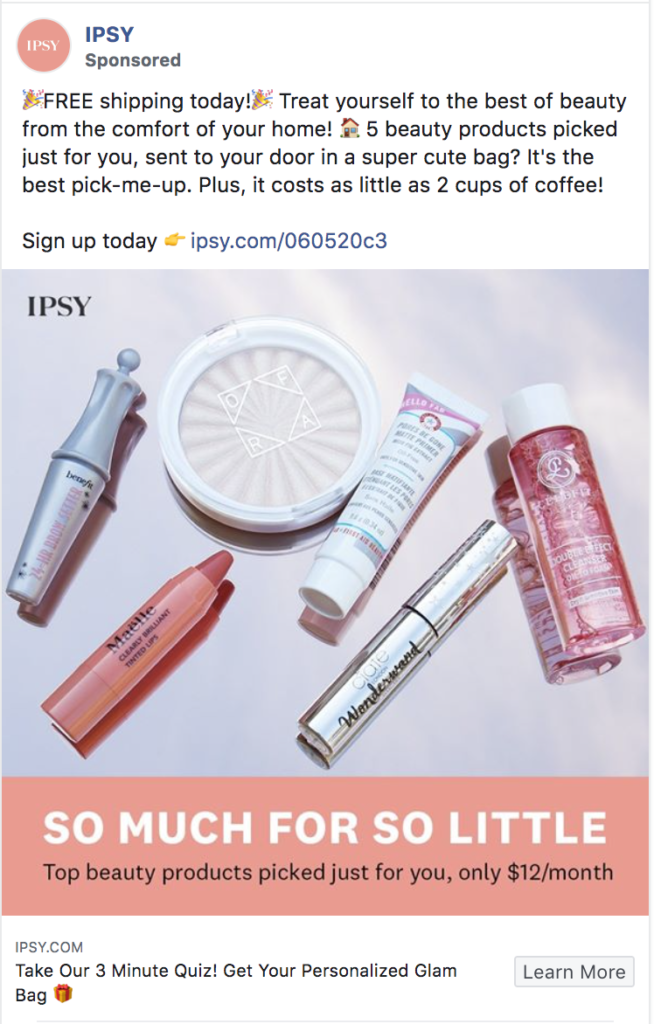
And Birchbox, another subscription cosmetics company, also runs paid ads with a quiz. Birchbox creates a sense of urgency and scarcity, with the offer of a free welcome gift for those that take the quiz now:
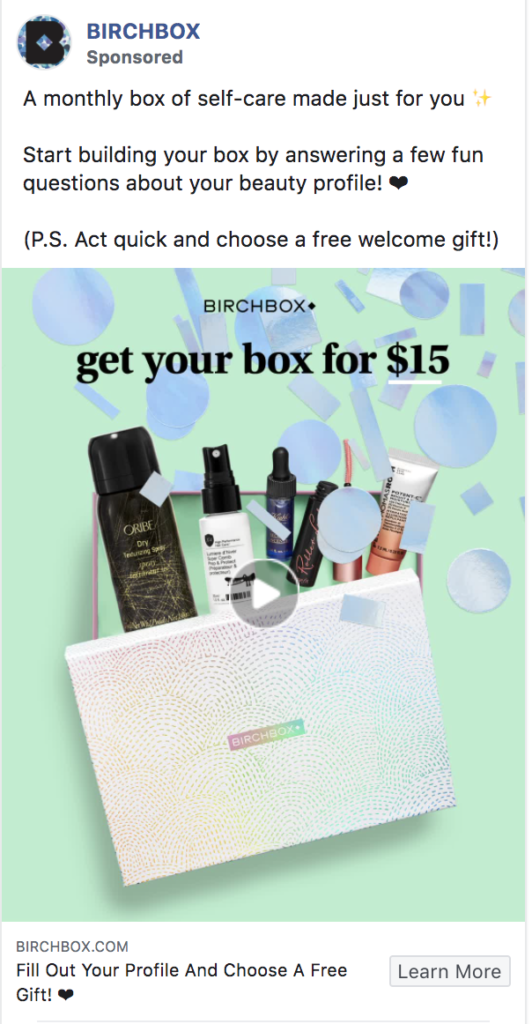
The Birchbox quiz is a short 3 question quiz, to assess the visitors beauty regimen and habits:
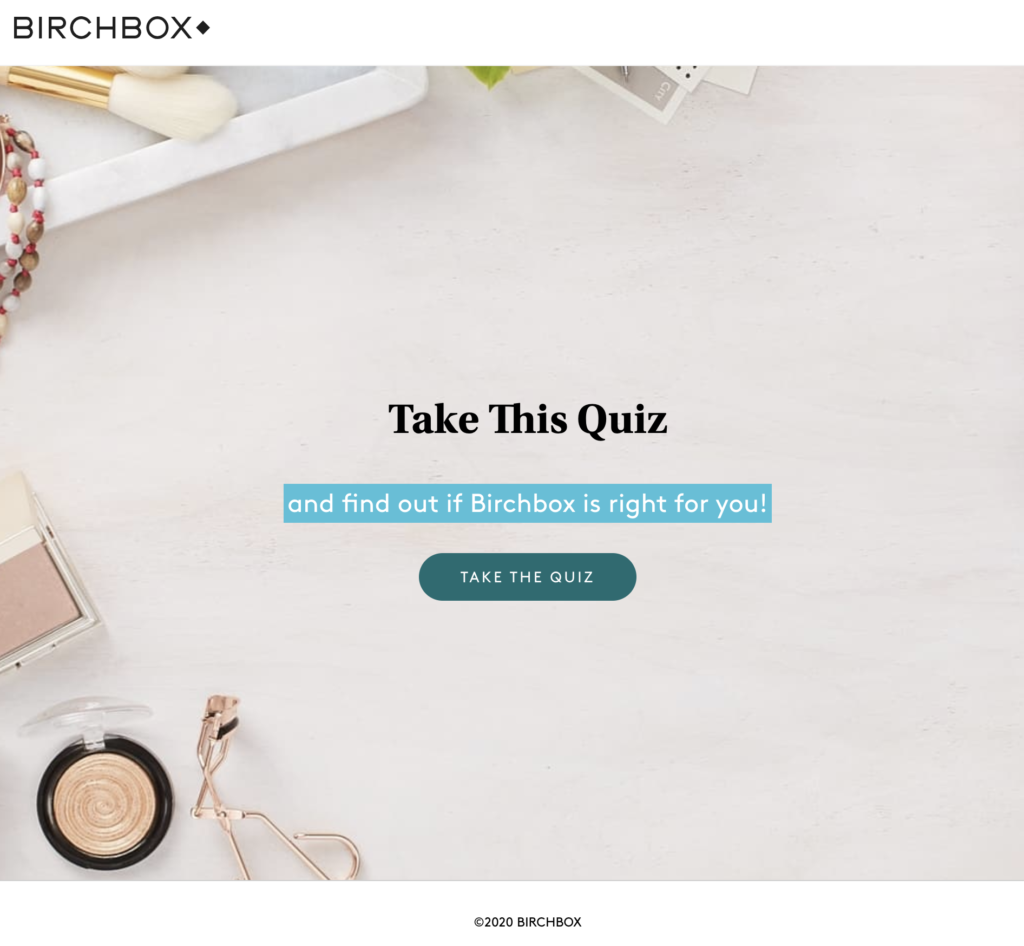
Interestingly, Birchbox is also running another paid ads campaign to drive visitors to “Create A Profile”. Presumably lower in the funnel, targeted towards shoppers who have a higher intent to purchase, the questionnaire is more specific about the types of products that users like:
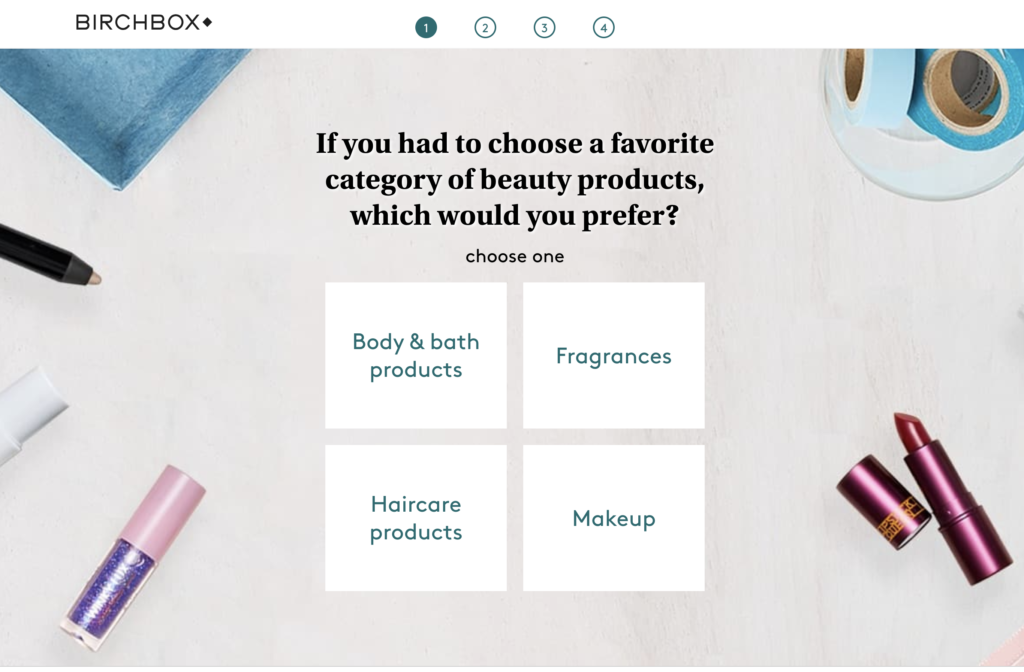
Shaving Products Use A Similar Formula
Dollar Shave Club, subscription men’s products, uses quizzes as a call to action in their Facebook ads. The ads play up the convenience, product discovery, and overall experience: take the personalized quiz and discover the perfect grooming products:
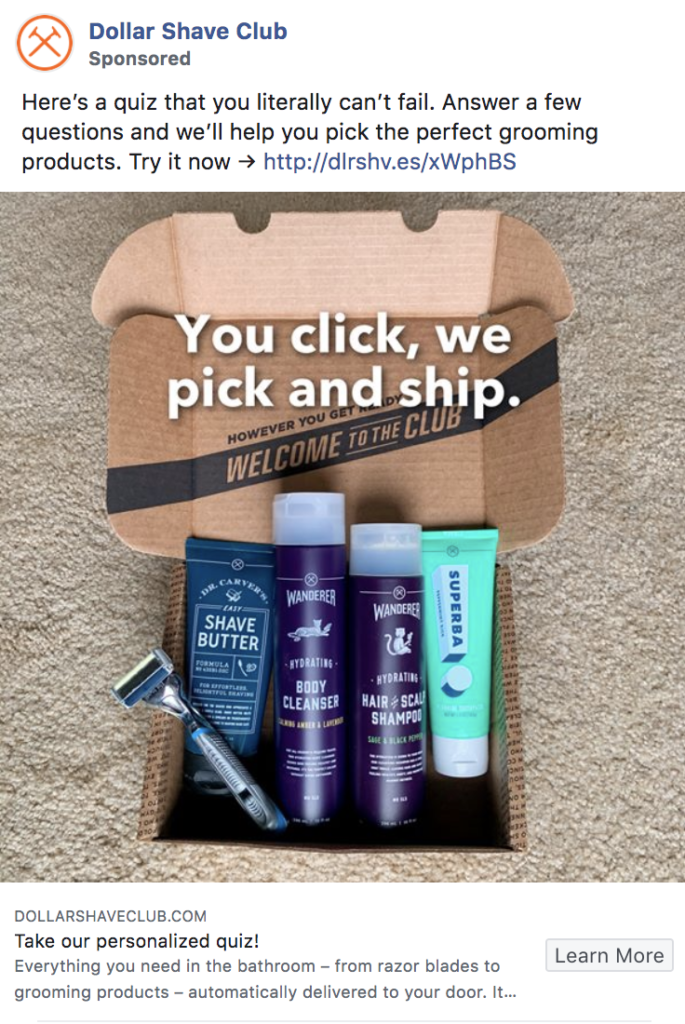
The Dollar Shave Club has multiple calls to action to guide users to take the quiz on the homepage, for those that go directly to the site:
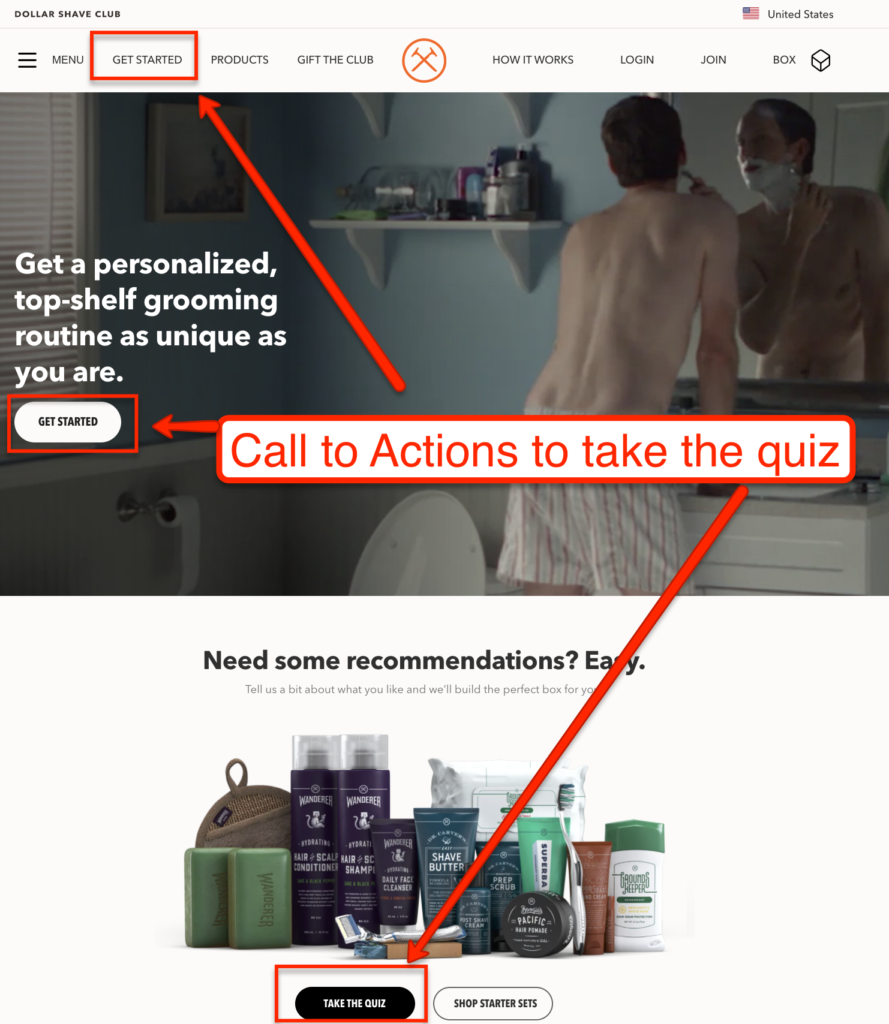
TAKEAWAY: In the Top Of Funnel, take advantage of the curiosity that quizzes invoke. It is an effective way to stop someone from scrolling through their social media feed, click on an ad, complete the quiz in exchange for valuable information. You are more likely to capture the email because it is contextually relevant.
Want to see how you can drive more Top Of Funnel traffic and capture more leads? We’ll send you a personalized video for your website and exactly how you can use a quiz!
Middle of Funnel – Educate Shoppers
What It Is: Shoppers in the Middle Of Funnel are aware of the product, of your brand, and are considering their purchase decision. There may be established channels of communication, like they subscribed to your email list or opted in to be a part of your audience on social media. The Goal: The goal in the Middle of Funnel is to further educate shoppers while removing any doubts that are preventing shoppers from purchasing. They are aware of their problem (addressed in the top of the funnel), and they are looking for a solution to solve it. What are their objections? What are the alternatives that they are considering? How do you differentiate yourself from the competition? Subtle product marketing, in the context of your site copy, email marketing, and quizzes can all help move shoppers down the funnel. Now your job is to help shoppers connect and learn more about your product. Yep, you guessed it: there are ways to leverage quizzes to accomplish your Middle of Funnel Goals. Some example use cases are helping users understand themselves better to know which product is best for them–whether their type of skin, hair, or body type. Let’s dig. into some examples…. Quizzes To Categorize Users Quizzes are particularly helpful for health and beauty brands, where the sizing and preference of shoppers can make some products more suitable than others. For example, many skincare brands use a “tone matching” quiz to guide visitors to the appropriate product. If there are many shades of makeup, and infinite skin tones, it can be a daunting task to find the perfect pair, especially when ordering online. Fenty’s “Face Shade Finder” offers 6 short questions to help shoppers pair the perfect foundation shade to skin tone.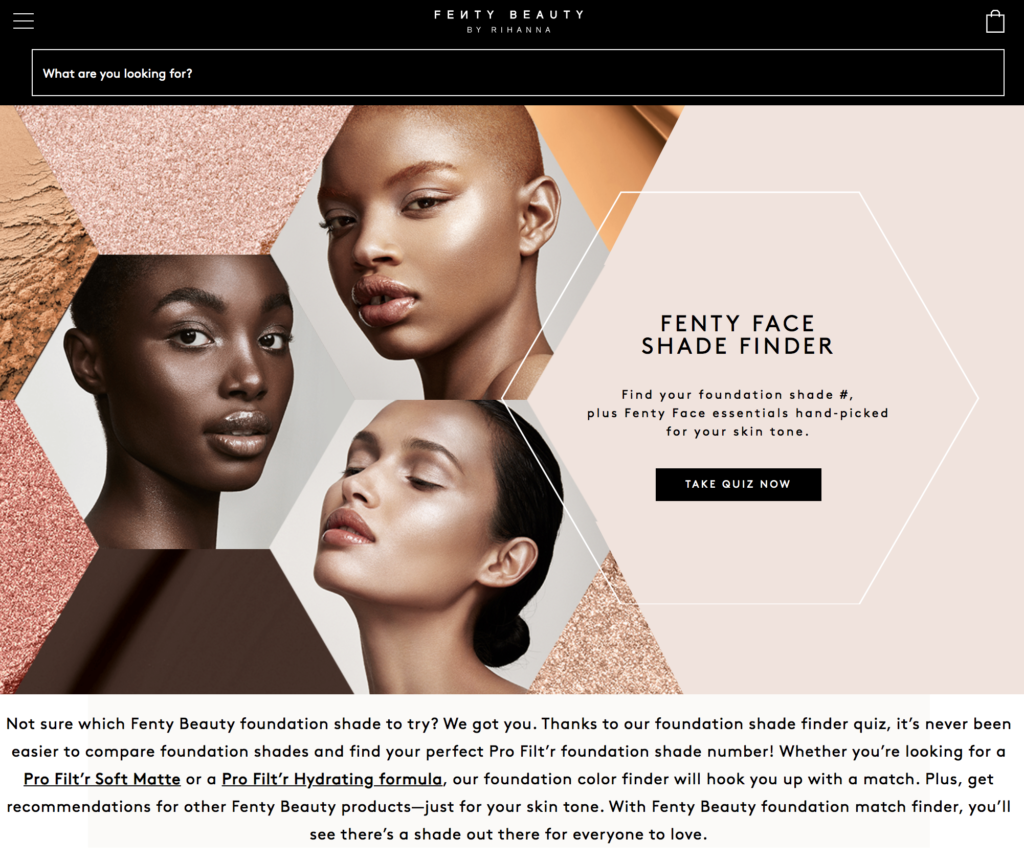

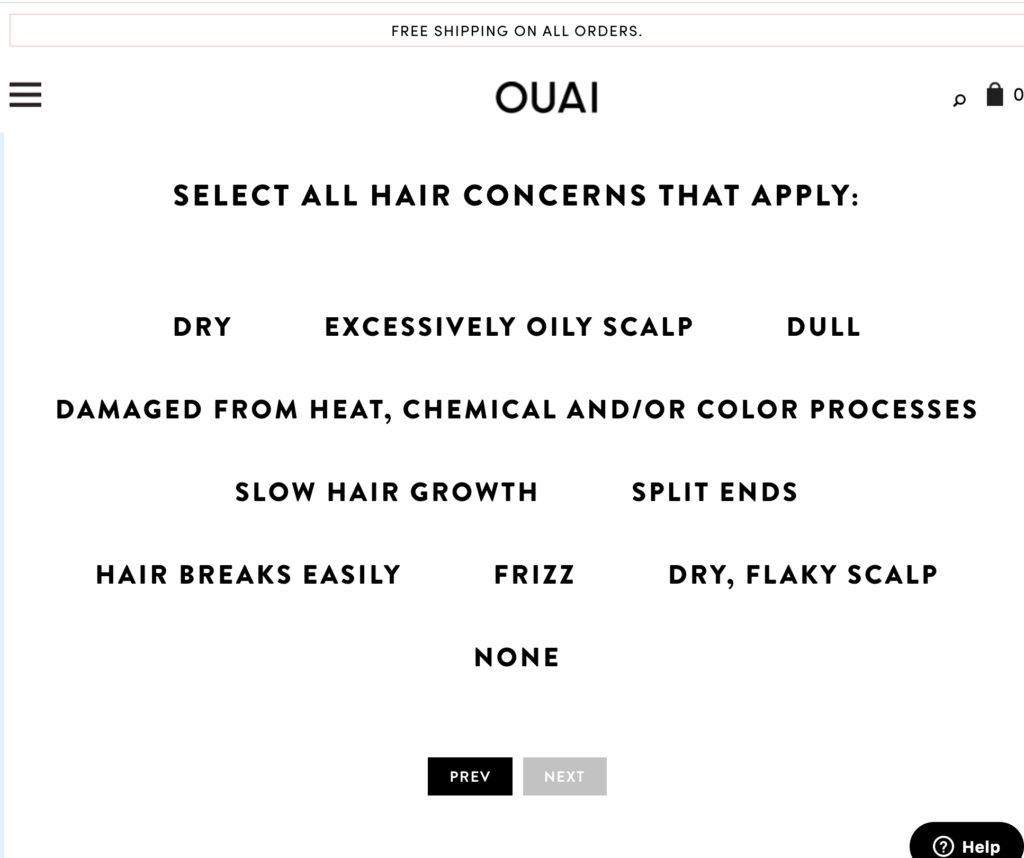
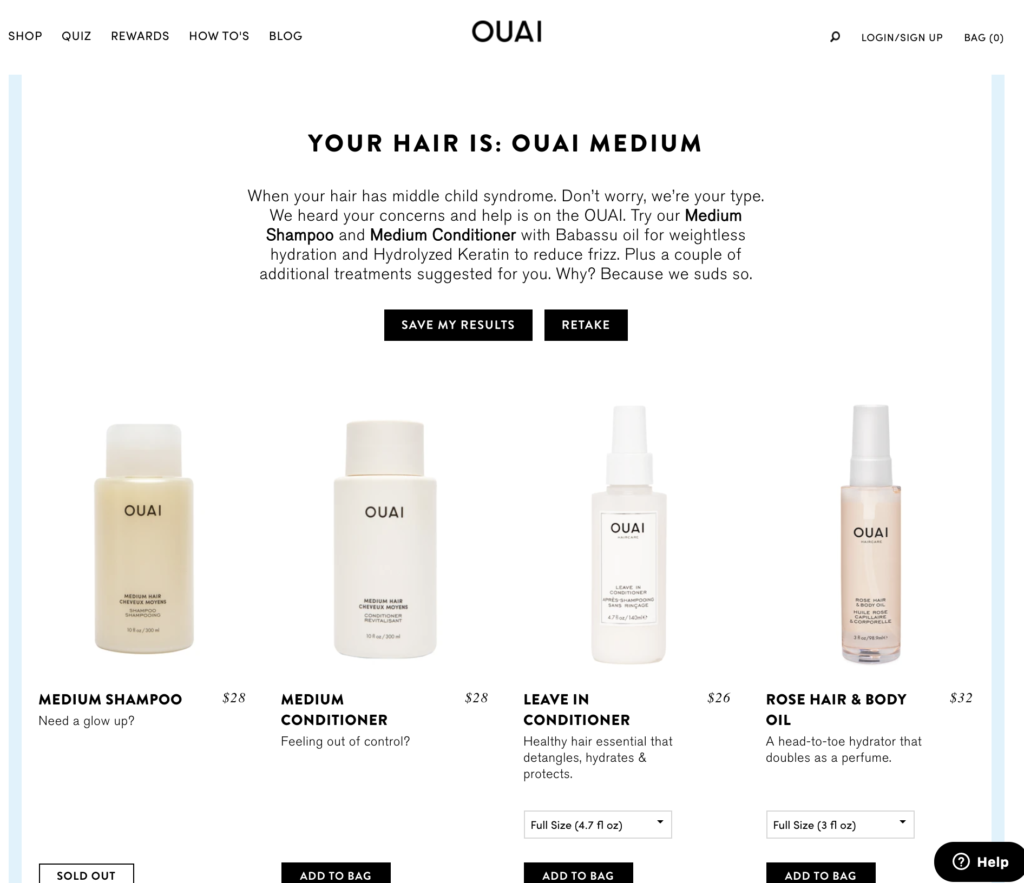
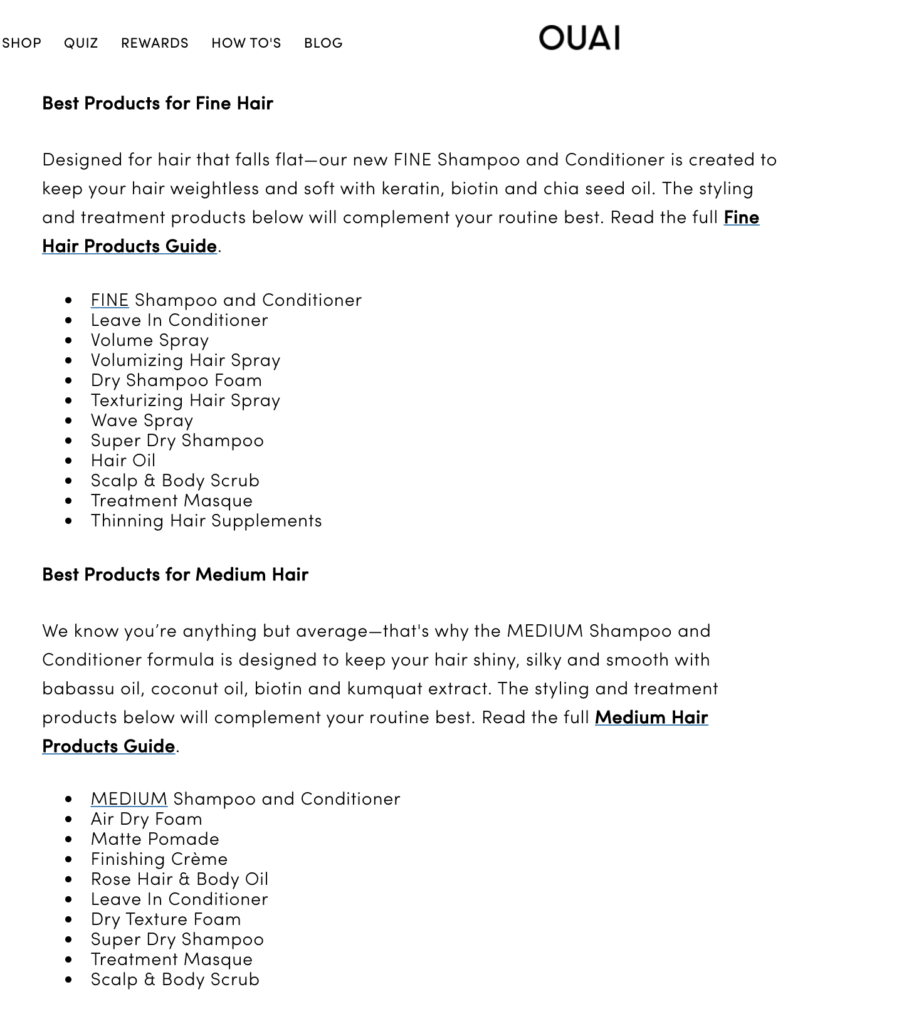
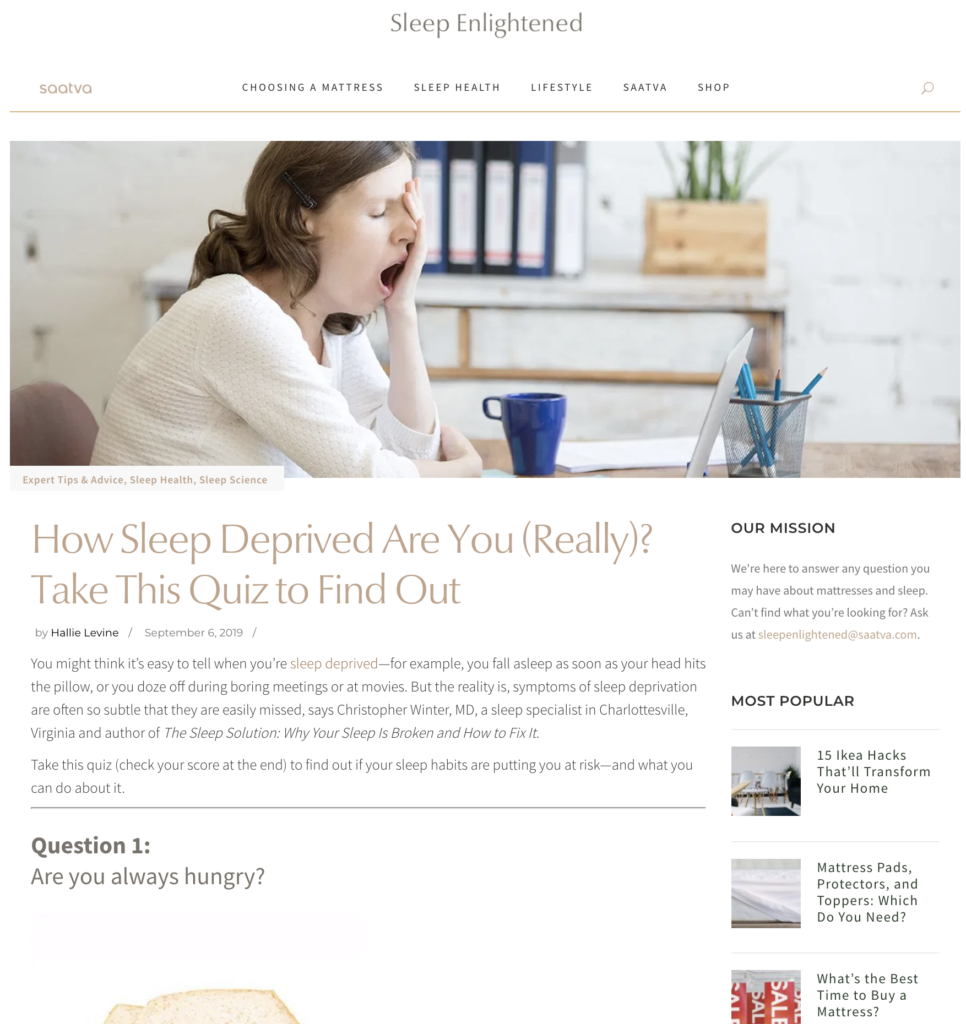
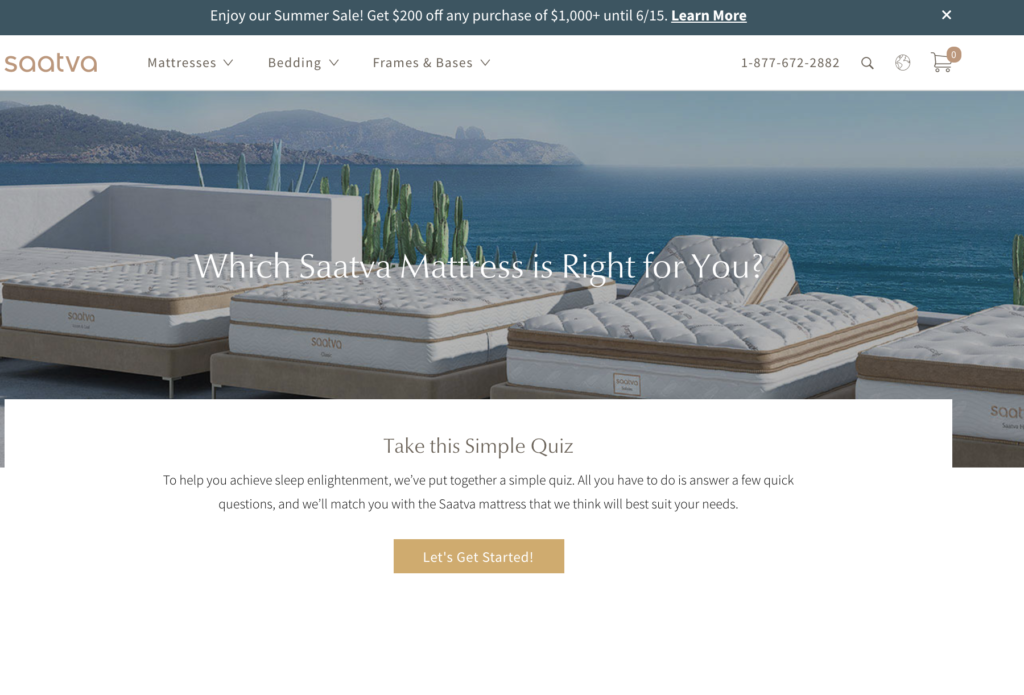
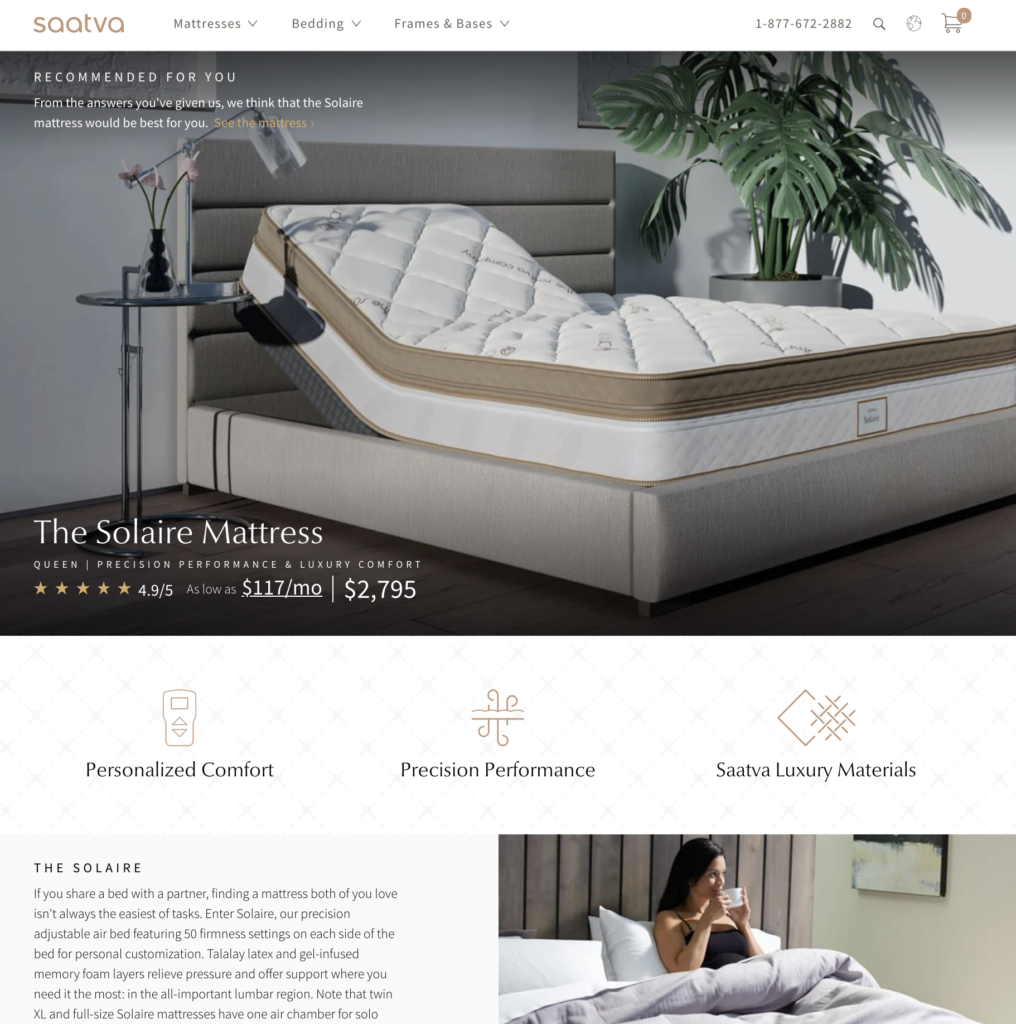 Source: Saatva
Source: Saatva
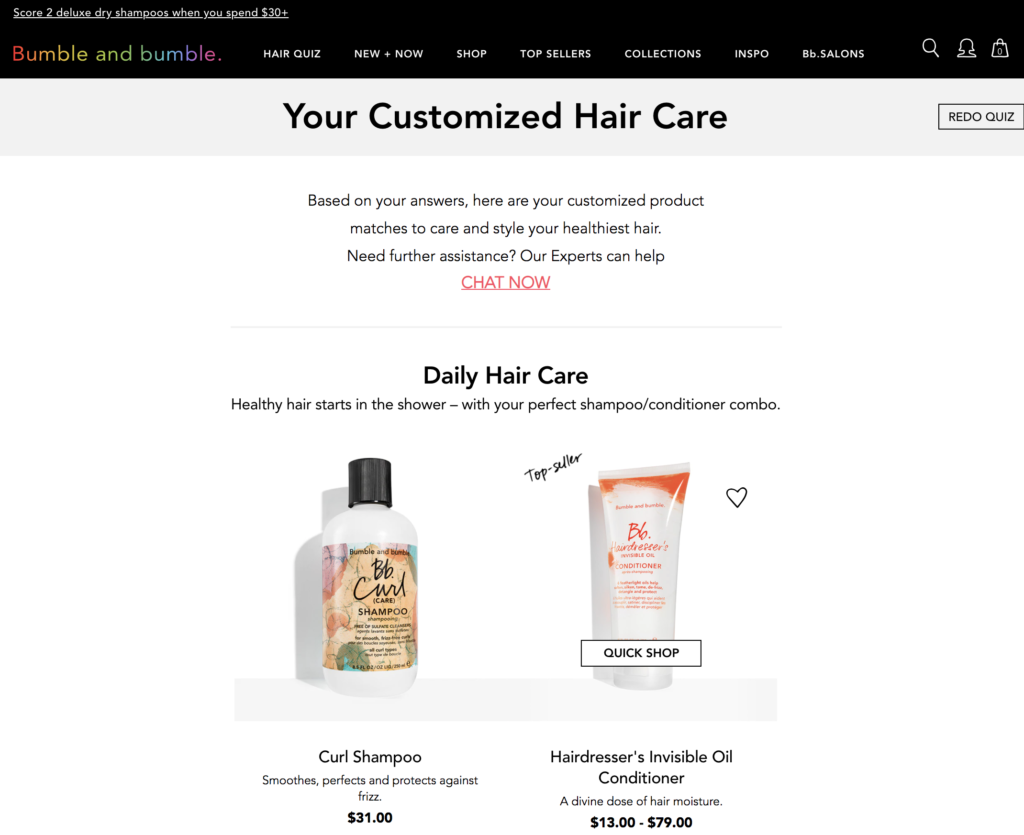
TAKEAWAY: Use quizzes to learn more about your shopper’s goals and needs. Shoppers are curious to learn more about themselves, and how you fit in to address their problems. This means that you can guide them to the appropriate product based on their needs, and save the answers to their quiz to inform future marketing campaigns for the user.
Bottom Of Funnel: Drive The Purchase Decision
What It Is: The Bottom of the Funnel is where you are moving potential customers into the last, and most important, step: add to cart and purchase! You have successfully attracted visitors to your site, compelled interest and moved the shopper to purchase. The Goal: The goal is simple: get the user to complete the purchase. Buyers are ready to purchase, but not sure yet which company to purchase from. Social proof, case studies, testimonials, and customer reviews can all be helpful in helping drive the conversion. A quiz can facilitate a user’s path to purchase, particularly those that require more input and personal data from shoppers.Quizzes Can Showcase Social Proof
At the bottom stages of the funnel, shoppers will look at reviews and social proof before completing a purchase. In fact, 93% of shoppers say that other reviews have an impact on their purchase decision, per this Podium study. Savvy quiz creators like Noom will incorporate social proof within their quiz experience, so that social proof and credibility is peppered throughout the whole experience.Quizzes Can Include Incentives To Purchase
Upon completing the quiz, the shopper just completed to a microconversion: completing a form and sharing information–quiz answers, an email, and possibly more. In exchange for the shopper completing the form and making that commitment, it is a logical next step to offer a discount as an expression of gratitude, or reciprocity. Reciprocity is the first principle of Influence, according to author Robert Cialdini: “So the key to using the Principle of Reciprocity is to be the first to give and to ensure that what you give is personalized and unexpected.” Offer a coupon or discount, and you are moving a shopper towards a purchase. Here is an example of Hubble offering their product for free, just for completing the quiz: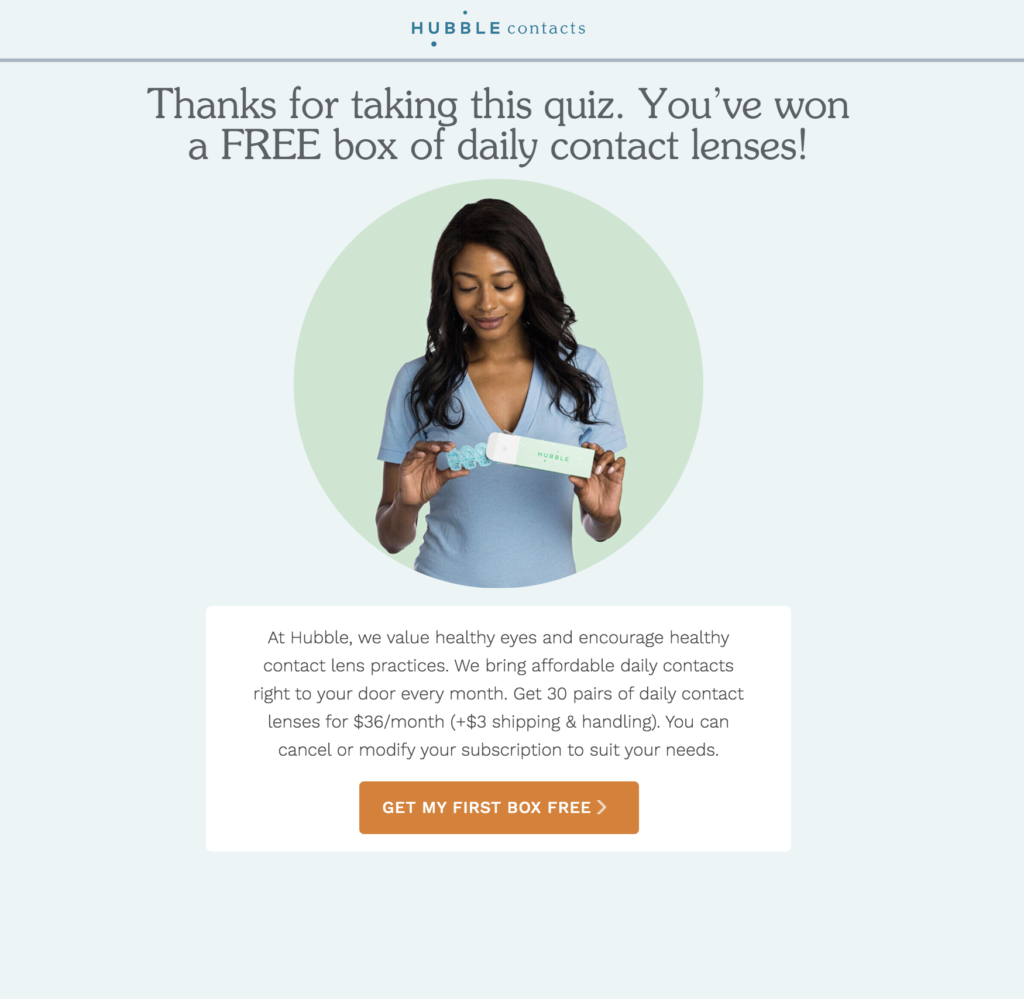
Showcase Personalized Products
One of the most innovative use cases of a quiz is to create a personalized product based on the quiz results. This is personalization at a whole new level: a customized product developed specifically for your needs. Here is an example from shampoo company Prose. The quiz (which they call a “consultation”) diagnoses characteristics of the shopper’s hair care needs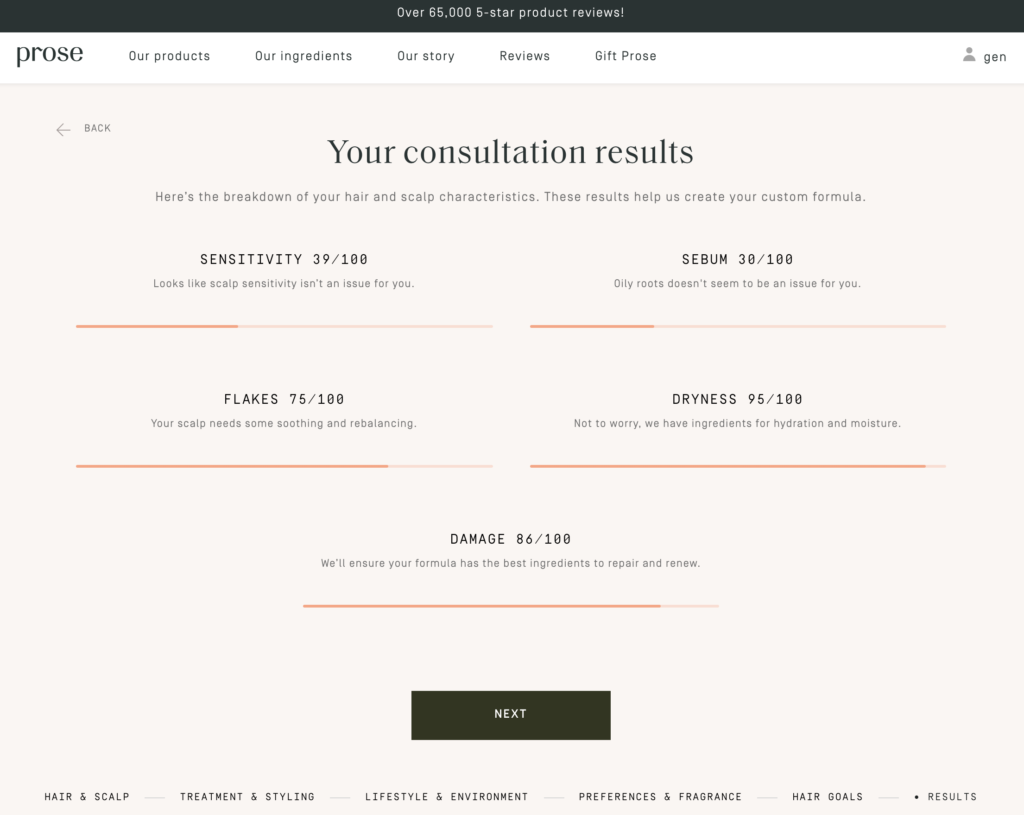
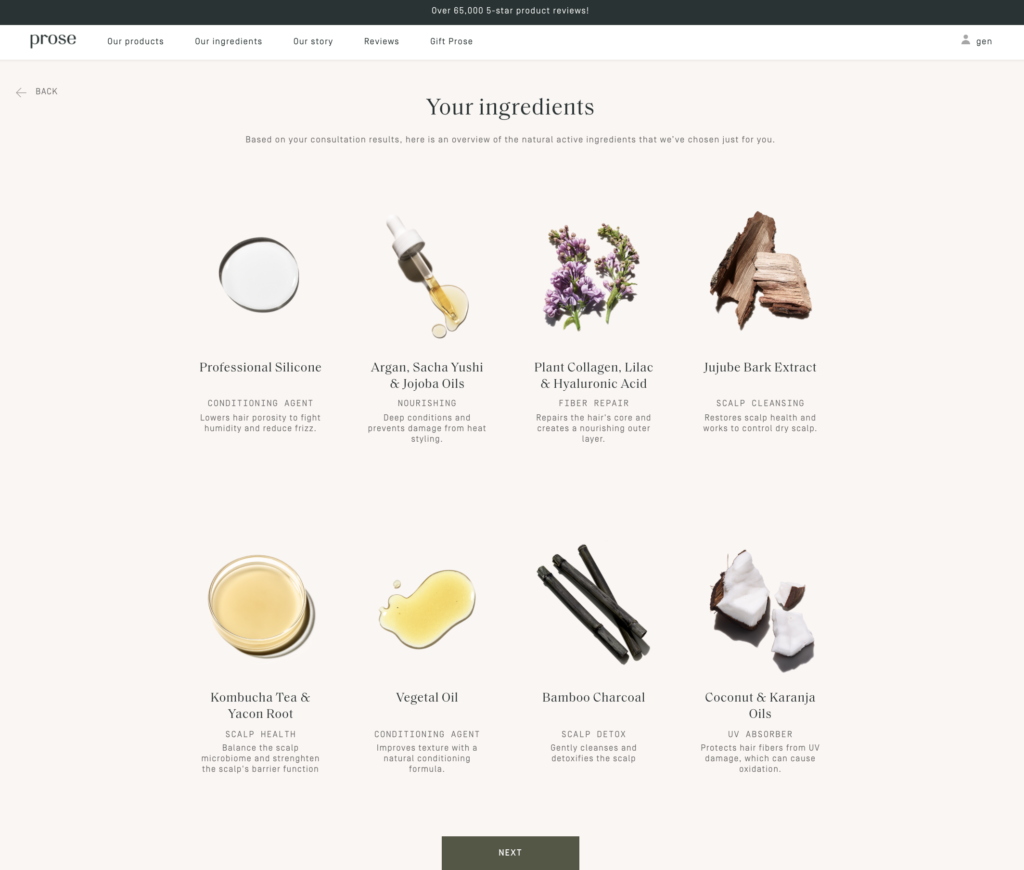
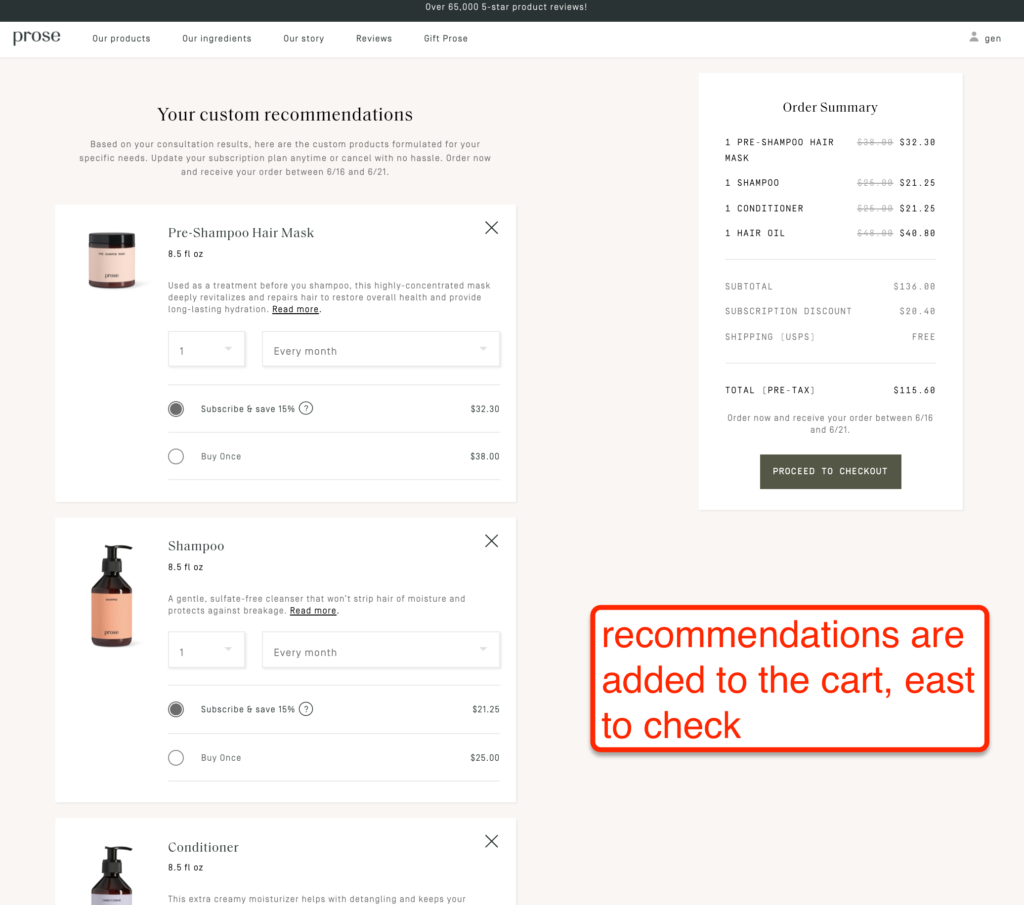
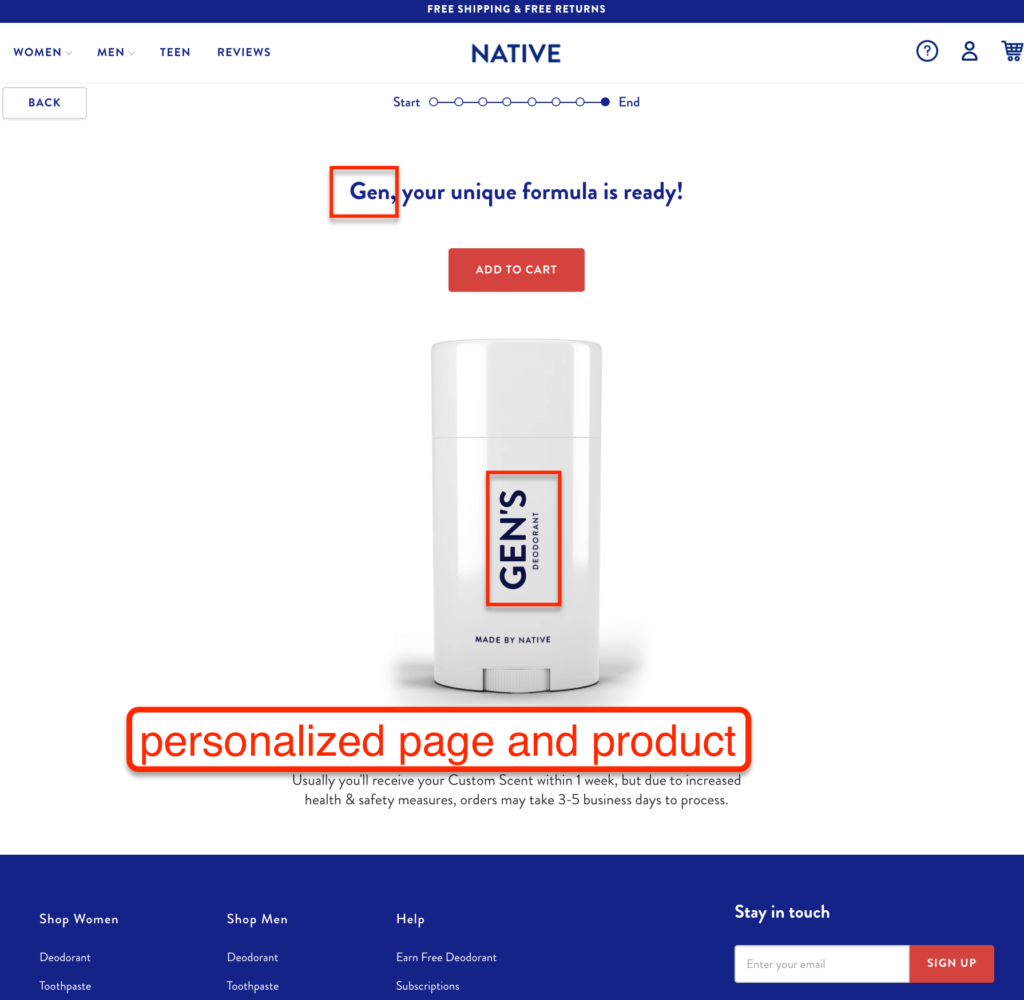
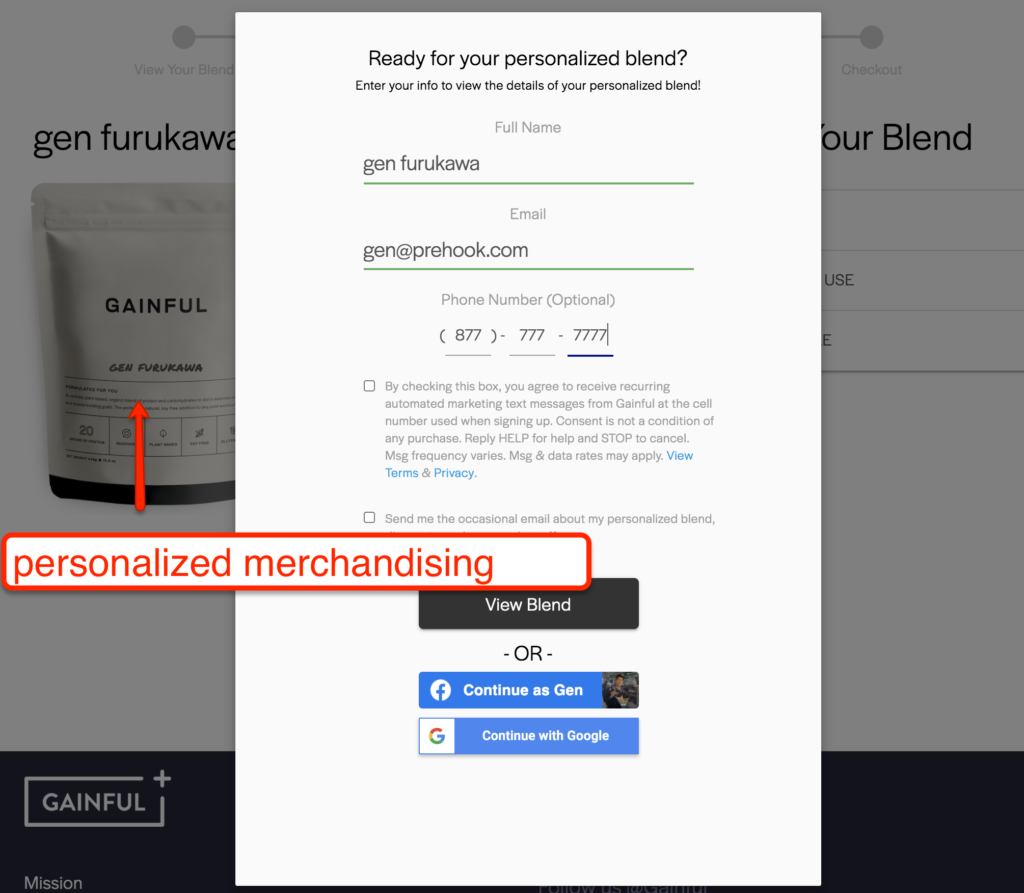
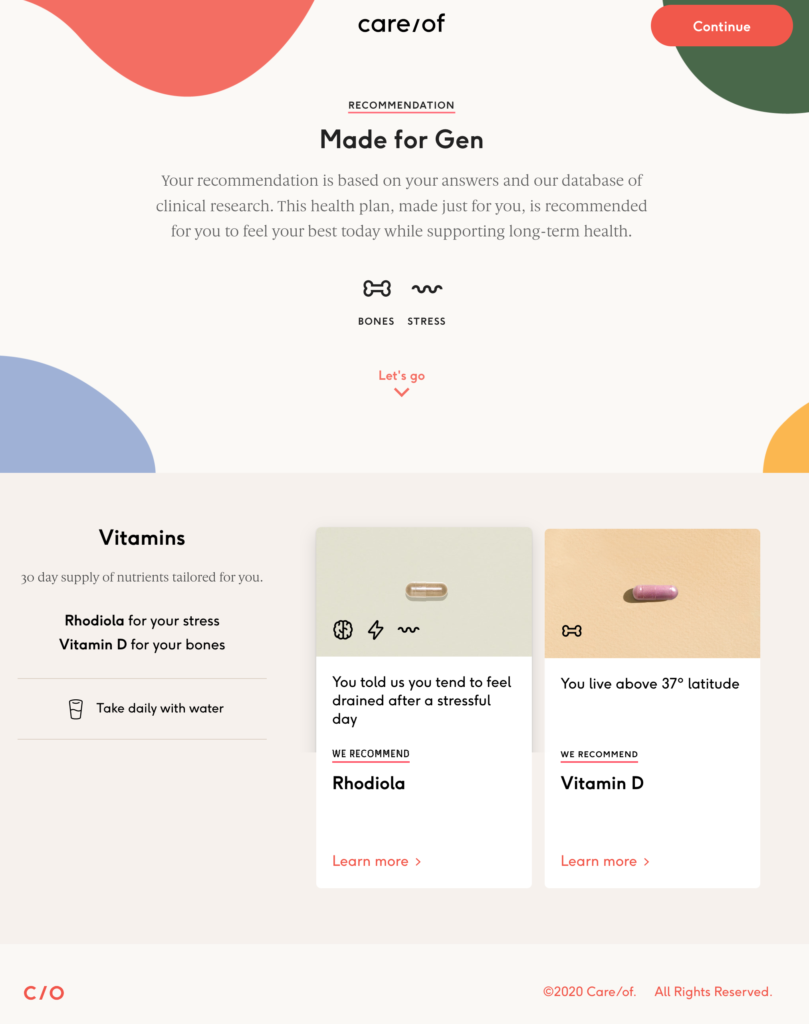
The Takeaway: The function of the quiz for shoppers at the Bottom of the Funnel is to remove any objections, questions, and hesitations. According to Deloitte, 1 in 4 consumers are willing to pay more to receive a personalized product or service, and in some categories, more than 50 percent of consumers expressed interest in purchasing customized products or services.”
Wrapping Up
The most effective marketing strategies are those that rely on a marketing funnel to drive micro-conversions that culminate in the conversion that matters most: a completed purchase. Regardless of what your brand sells–cosmetics, water bottles, wine–your customers will follow a similar path on their journey from identifying their problem, discovering your brand, and being convinced that your product can solve the problem. To move customers through your funnel effectively most efficiently, you need to know what problem you are solving for. And this is where quizzes can be an invaluable point of leverage. Quizzes are an exchange of value–the shopper shares information in a quiz and you provide an engaging and educational experience. Whatever stage in your ecommerce funnel you choose to use a quiz, you will find a tool that can help you drive awareness, create product differentiation, and guide your users to the ideal product for their needs. As Seth Godin notes, moving your customer to action (and closer to their desired goal) is exactly your job as a marketer!Could you benefit from a quiz to drive more leads, higher conversion rate, and more sales? We’ll send you a step-by-step guide to build your own quiz, with templates and examples from the best Direct-To-Consumer brands.

